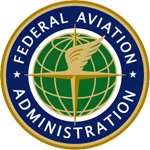 Fuel Starvation and Exhaustion are still causal factors in many General Aviation Accidents. Fortunately, a large selection of fuel totalizing and monitoring options are available to help you prevent these very preventable accidents. But, technology only helps when pilots apply it consistently and correctly. Follow these three simple steps to avoid becoming a fuel accident statistic:
Fuel Starvation and Exhaustion are still causal factors in many General Aviation Accidents. Fortunately, a large selection of fuel totalizing and monitoring options are available to help you prevent these very preventable accidents. But, technology only helps when pilots apply it consistently and correctly. Follow these three simple steps to avoid becoming a fuel accident statistic:
- Whether you’re “sticking the tanks” or relying on cutting edge fuel management software, know how much fuel you have on board before each takeoff. If you have a fuel management system on-board, make sure you program it with accurate information before Every Flight.
- Know how much fuel you plan to burn and how much fuel you’re burning. If you don’t have on-board equipment to answer this question, calculate your fuel burn before each flight and confirm your calculations each time you refuel. Comparing your actual fuel burn to your calculated fuel burn will give you confidence in your fuel planning and you can often uncover fuel leaks or other small problems before they become big ones.
- Finally, make a commitment to join the many pilots that have a personal minimum not to land with less than one hour’s fuel in the tanks. This will exceed any regulatory reserve fuel requirements and you’ll never be anxious about pushing your fuel.
For more information contact Kevin Clover, FAA AFS-850 or the iFlightPlanner Crew if you have any questions about how to further customize your aircraft profiles to ensure the most accurate fuel calculations possible.

